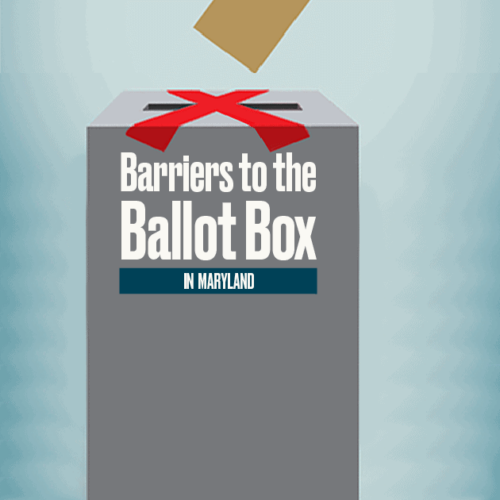Introduction
Maryland has pretty good voter-access rules overall. It got a thumbs-up in almost all categories when the Brennan Center for Justice compared state election policies this year for pandemic readiness. To safeguard health, officials vowed to send mail-in ballots for the primary to all registered voters.
But 330,000 ballots intended for Baltimore voters were mailed a week late. Those delays and similar problems elsewhere pressed the state to add more ballot drop boxes and in-person voting centers.
Sign up for The Moment newsletter
Our CEO Susan Smith Richardson guides you through conversations and context on race and inequality.
Now, with reports of significant slowdowns in U.S. Postal Service delivery amid political interference, good-government advocates are worried about how mail-in voting will spool out in the general election — particularly because this time, no one will get a ballot automatically.
Here’s a look at some of the most significant ongoing potential barriers to voting rights and access in the state:
Mail-in ballots
Tierra D. Bradford, policy manager for Common Cause Maryland, said voter advocacy groups were startled by Gov. Larry Hogan’s decision in July to send applications for mail-in ballots for the November election rather than the actual ballots.
Hogan, who called for widespread in-person voting locations while encouraging mail-in voting, has said he was reacting to major logistical problems during the primary.
Bradford and others are concerned that some Marylanders will see the envelope from their boards of elections, assume it’s the ballot — as it was for the primary — and set it aside until they’re ready to vote. At that point, it might be difficult to meet the deadline. And either way, that means more back-and-forth by mail.
“You’re extending the mail process by making people fill out their absentee ballot application,” Bradford said. “Especially with everything going on with USPS right now, we feel that extending the process … is not really a good idea.”
It’s no mere theoretical fear that some voters might miss their chance: 30,000 absentee ballots cast in Maryland’s primary election this year were tossed out for missing the deadline. They must be postmarked by election day and arrive no later than 10 a.m. 10 days afterward.
Ten states are sending ballots to all voters this year or have permitted their counties to do so, according to the National Conference of State Legislatures. On the flip side, nearly 30 states are neither sending ballots nor applications to all voters, the organization said in its mid-September roundup of mail-in voting policies.
Voting-access advocates are trying to get the word out about alternatives to relying on the mail. Voters can drop their ballots off at their county board of elections office, in drop-off boxes or at polling places. Residents who opt to vote in person can show up during Maryland’s early voting period to avoid the usually larger crowds of election day.
Voting from jail
Marylanders awaiting trial or incarcerated for a misdemeanor are eligible to vote. Whether they actually can cast a ballot is another matter.
The state’s Department of Public Safety and Correctional Services “says they have a policy in place for people to be able to vote, but we haven’t seen that be a reality, we haven’t heard of people actually having access to the ballot,” Bradford said. “So we’ve been trying to work with the state Board of Elections, putting together packets to let people know they have voting rights, that they can vote in this election.”
Her group and others were hoping to get a law on the books to make this an automatic process. But this year’s legislative session ended early because of the pandemic.
Read more in Money and Democracy
US Polling Places
In North Dakota, Native Americans have overcome barriers to vote
US Polling Places
In Pennsylvania, lawsuits leave election rules in doubt
Will ballot drop boxes be allowed? When is the absentee ballot deadline? The answer could change before Election Day if Republican leaders win in court.


Join the conversation
Show Comments